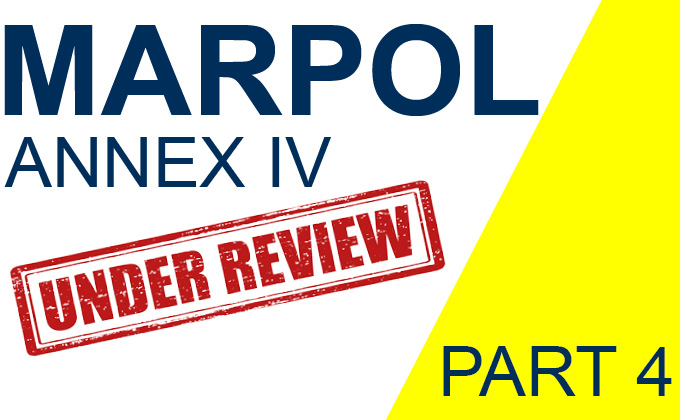MARPOL Annex IV is currently under revision by the IMO. We cover the most relevant topics in a multi-part article series:
PART 3: SEWAGE MANAGEMENT PLAN
The industry is getting familiar with record books that already exist for oily water separators (OWS), garbage, and ballast water management systems (BWMS), etc. The ongoing revisions of MARPOL Annex IV have recognised the need to introduce a sewage record book to ships’ sewage management. Under the newly proposed regulation 11A.3 (PPR 10/12), applicable ships shall be provided with a sewage record book approved by the administration. The proposed sewage record book is stipulated under the newly created implementation guideline.
WHAT IS A SEWAGE RECORD BOOK?
In principle, the sewage record book should:
- record each discharge (or each fixed 24-hour period for automatic discharges) into the sea or to a reception facility, including date, time, location and the estimated or measured amount discharged or incinerated, etc.;
- record turbidity or other indicative parameters of the effluent from the sewage treatment plant;
- record all maintenance, calibrations, shut-down/turn-on, and switching of nutrient removal processes, failures, overflow, laboratory analysis results, etc.
- be signed by the master of the ship;
- be kept on board and made readily available for inspection. The records and receipts obtained from reception facilities shall be preserved for at least two years.
- be made available to authorised officers for inspection.
- and so on…
RECORD BOOK AND MANAGEMENT PLAN GO HAND-IN-HAND
Entries to a sewage record book should record the following proposed categories: A) sewage (Regulation 1.3), B) sewage sludge (Regulation 1.17), C) effluent (Regulation 1.16), D) comminuted and disinfected sewage, and E) other (to be specified by the ship, e.g, overflows).
It should be noted that the amount of sewage sludge and its disposals need to be recorded in the sewage record book, and in accordance with the ship-specific sewage management plan. The latest draft templates are available in PPR 10/12.
DO ALL SHIPS HAVE TO HAVE A RECORD BOOK ON SEWAGE IN THE FUTURE?
Whilst many details are to be finalised by the ongoing revision work, the latest development suggests that the sewage record book be introduced to all ships, including ships installed with sewage systems other than sewage treatment plants (PPR 10/WP.1/Rev.1), and all existing ships covered by MARPOL Annex IV (PPR 10/12).
TO BE ABLE TO KEEP A COMPLIANT RECORD, THE SEWAGE SYSTEM HAS TO BE COMPLIANT
Shipyards and ship owners should understand the potential implications for the existing ships, particularly the current new build specifications. For example, to comply with future MARPOL Annex IV, and to improve investment efficiency, it is plausible to choose sewage treatment plants that separate solids, are fitted with a sewage sludge discharge connection point, and have de-sludge provisions such as a sewage sludge holding tank to suit the intended trade patterns and itineraries. Certified “no-sludge” sewage treatment plants should be avoided or replaced.

